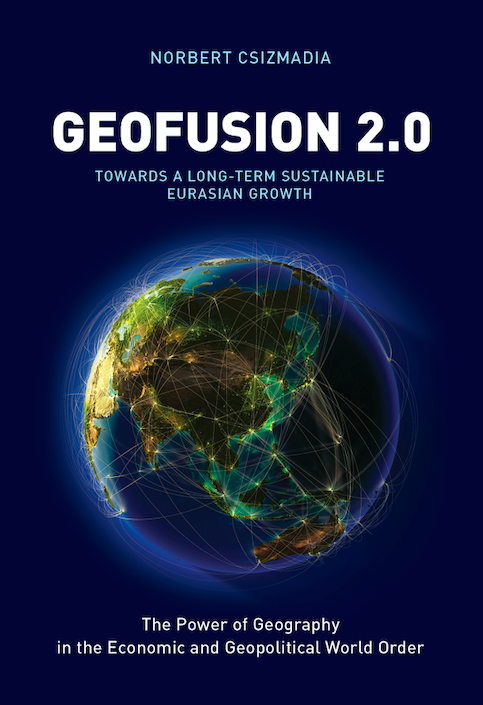Geofusion by Norbert Csizmadia published in English and Chinese
EnglishNorbert CsizmadiaThe World in 100 MapsThe book entitled GEOFUSION 2.0 – TOWARDS A LONG-TERM SUSTAINABLE EURASIAN GROWTH, written by geographer, geopolitical and geoeconomic expert Norbert Csizmadia, has been published. The volume is the English version of the book Geofúzió: A földrajz szerepe a 21. századi gazdasági és geopolitikai világrendben, published in December 2020. In addition to the English version, the book has become available for readers in Chinese.
Norbert Csizmadia interprets the global economic and geopolitical trends of the 21st century by exploring their geographical and economic context. His research results are substantiated by a 100 new awareness-raising maps and charts.
He assumes that the international relations of the 21st century have become more complex and diverse than previously.
And globalisation has entered a new age: the age of technology and knowledge. As a follow-up to his book Geopillanat (Geo-moment) published in 2016, the author now examines the drivers, powerhouses, achievements, visions and strategies of the new geopolitical era using the geofusional method. He emphasises that the geopolitical trends of the 20th century are moving to the geoeconomic landscape, and competition is now about markets rather than land.

His previous English-language book entitled Geofusion – the Power of Geography and Mapping of the 21st century has been published by the British LID Publishing and the Singaporean World Scientific Publishing, and has since been recommended by theorists such as Albert-Laszlo Barabasi, George Friedman, a leading geostrategic thinker in Singapore, Parag Khanna, Simon Anholt and Abishur Prakash, author of the book Next geopolitics. Geofusion 2.0 can also be considered as a continuation of the previous book.
The term Csizmadia introduced refers to the spatial context of the complex phenomena in the world. Geofusion is also a study method for the synthesis of network maps that are organized into nodes and represent functional interconnections.
This enables us to identify and graphically display the new economic and geopolitical forces of our world. Geofusion is the geopolitics of networks and the network of geopolitics at the same time. It is the exploration of the niche areas of other scientific fields, the fusion of geography with economics, social geography, network research and natural sciences.
The book covers the following topics in four distinct chapters:
- the interrelatedness of geography and geopolitics, including the development of geopolitical thinking and the nature of geoeconomic thinking;
- geopolitical factors and structures: that is, how to define the geopolitical forces and players of the 21st century;
- the 21st-century polycentric economic and geopolitical world order, including a detailed explanation of why this geoeconomic era can be regarded as the Eurasian era of technology, urban networks and long-term sustainable growth;
- and as a summary, the age of geofusions.
And as an epilogue, the reader is also offered an analysis of how the COVID-19 pandemic has changed the world with respect to these aspects.
Geofusion 2.0 is available in English, Chinese and Hungarian in the PABooks bookstore in the House of Wisdom as well as in its web store at www.pallasathenekiado.hu.
